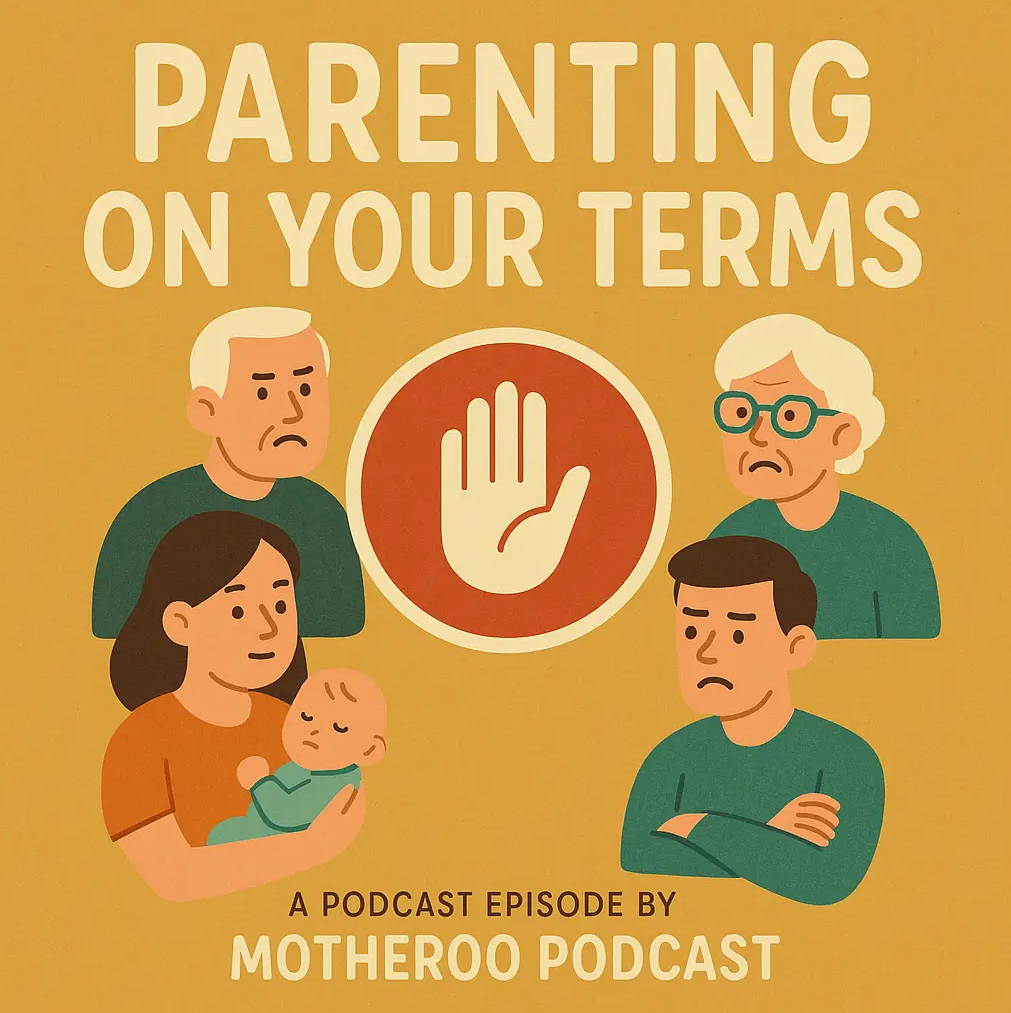Protecting Your Child’s Digital Identity: Why You Should Reconsider Posting Their Face Online
In today’s digital age, sharing photos and videos of our children has become second nature for many parents. The term “sharenting” – a blend of “sharing” and “parenting” – describes the increasingly common practice of parents sharing details about their children on social media. While the intentions behind these posts are typically innocent, research reveals significant concerns about this practice that every parent should consider.
The Surprising Scope of Sharenting
Studies indicate that approximately 77% of parents share stories, videos, or images of their children on social media. Even more concerning, 81% of children in Western countries have some form of online presence before they reach just two years of age. For many children, their digital footprint begins before they’re even born, with parents posting ultrasound images and pregnancy announcements.
What many parents don’t realize is that 93% are unaware of the potential risks associated with this sharing. This lack of awareness creates vulnerabilities that could affect children for years to come.
Identity Theft and Digital Exploitation
Children’s digital identities are particularly valuable to cybercriminals because they represent a “clean slate”. When parents share basic details like a child’s full name, birthdate, or school information alongside photos, they’re potentially providing identity thieves with the building blocks needed to commit fraud. Since parents rarely monitor their children’s credit, this fraud can go undetected for years.
Digital Kidnapping
This disturbing practice involves strangers downloading images of children and pretending these children are their own by reposting them on social media accounts. This form of identity theft can expose private information that could adversely impact a child’s future opportunities or subject them to bullying.
Exposure to Predators
Dr. Valeska Berg of Edith Cowan University warns that seemingly innocent photos can reveal identifying information like school uniforms or locations. Digital photographs contain hidden data including geotags that can allow individuals with malicious intent to track a child’s real-time location. As cybersecurity expert Hyeyoung Lim notes, “Criminals can track a child’s location, use images for identity theft or even commit fraud by imitating the child’s voice”.
AI and Deepfake Concerns
A particularly alarming modern risk involves artificial intelligence. In 2023, the National Center for Missing & Exploited Children received approximately 4,700 reports of child sexually exploitative material generated with deepfake or AI technology. Videos and photos posted on social networks can be hijacked to create fake profiles or used to train AI to generate “clones” for scams.
Permanent Digital Footprint Without Consent
Children have no say in the digital identity being created for them. Research shows that more than a quarter of 10-12 year olds reported feeling “embarrassed, anxious or worried” when their parents posted pictures of them online. This can damage the parent-child relationship as children grow older.
Practical Alternatives to Sharenting
If you’re looking to share your child’s milestones while protecting their privacy, consider these evidence-based alternatives:
- Use private messaging services – Dr. Berg recommends private messaging platforms like WhatsApp, Signal, or Messenger for sharing photos with family members rather than public social media posts.
- Follow the “holiday card-or-less” rule – Leah Plunkett, a Harvard Law School faculty member specializing in children and technology, suggests limiting sharing to what you’d include in an annual holiday card.
- Check your privacy settings regularly – Ensure your social media accounts have strict privacy settings, understanding that even “friends only” posts can still be seen by people you may not know well.
- Review your network of followers – Nearly 80% of parents have social media followers they’ve never met in real life. Consider whether all these people need access to images of your child.
- Ask for consent as children get older – Include children in decisions about what’s shared about them as they develop. This models good digital citizenship.
- Consider creative alternatives – Some parents share photos with emojis covering faces, or take photos from angles that don’t show their child’s face.
Resources to Learn More
For parents wanting to delve deeper into this important topic, several excellent resources are available:
- @parentsagainstposting via Instagram – A community dedicated to raising awareness about children’s digital privacy
- eSafety Commissioner – Offers guidance on children’s online privacy (esafety.gov.au)
- Internet Matters – Provides detailed sharenting tips for parents (internetmatters.org)
- UNICEF Australia – Offers guidance on sharing content about children online
- Leah Plunkett’s book: “Sharenthood: Why We Should Think Before We Talk About Our Kids Online”
Final Thoughts
Protecting your child’s digital identity doesn’t mean never sharing anything about them online. Rather, it means approaching that sharing with awareness, intention, and respect for your child’s future autonomy. By being mindful of what we post, we can celebrate our children’s milestones while still safeguarding their digital future.
As Dr. Berg notes, “A lot of parents are unaware that when they post things like photos or identifying information, such as school uniforms, they are creating a digital identity for their children”. By educating ourselves about these risks, we can make more informed choices about our children’s digital presence.
Citations:
- https://phys.org/news/2024-03-fresh-experts-dangers-kids-online.html
- https://www.uab.edu/news/news-you-can-use/cybersecurity-dangers-of-sharenting-and-how-to-protect-your-child
- https://www.bitdefender.com/en-au/blog/hotforsecurity/the-impact-of-sharenting-how-the-digital-identity-you-create-for-your-child-today-could-affect-their-future
- https://pediatrics.jmir.org/2024/1/e54414/
- https://www.ccyp.com.au/wp-content/uploads/2022/01/Manage-Your-Sharenting.pdf
- https://pmc.ncbi.nlm.nih.gov/articles/PMC11290302/
- https://www.esafety.gov.au/parents/issues-and-advice/privacy-child
- https://pediatrics.jmir.org/2024/1/e54414/PDF
- https://www.internetmatters.org/resources/sharenting-tips-for-parents/
- https://www.security.org/digital-safety/parenting-social-media-report/
- https://www.npr.org/2024/05/20/1251819597/why-you-should-think-twice-before-posting-that-cute-photo-of-your-kid-online
- https://pubmed.ncbi.nlm.nih.gov/38381499/
- https://www.linkedin.com/pulse/sharenting-childrens-online-privacy-concerns-hidden-risks-essien-0xn1f
- https://www.kaspersky.com/resource-center/threats/children-photos-and-online-safety
- https://ro.ecu.edu.au/ecuworks2022-2026/4197/
- https://www.techradar.com/computing/cyber-security/sharenting-the-online-parenting-trend-kids-never-asked-for
- https://theconversation.com/the-online-world-isnt-always-safe-heres-what-to-know-before-posting-photos-of-your-child-244171
- https://www.unicef.org.au/sharing-childrens-images-online
- https://health.clevelandclinic.org/sharenting
- https://www.newbury.co.uk/news-knowledge/articles/social-media-putting-your-child-risk-identity/
- https://pmc.ncbi.nlm.nih.gov/articles/PMC10918551/
- https://www.instagram.com/reel/DJFoOwupABY/
- https://www.instagram.com/reel/DJmX0uCRPnh/
- https://www.kidsarenotcontent.com/wp-content/uploads/2024/05/KidsAreNotContentOnePager.pdf
- https://www.vidio.ai/tools/ai-face-blurring
- https://www.frontiersin.org/journals/education/articles/10.3389/feduc.2022.803393/full
- https://www.westernsydney.edu.au/newscentre/news_centre/more_news_stories/two-thirds_of_children_interact_daily_online_with_people_they_dont_know_despite_grooming_fears
- https://ro.ecu.edu.au/cgi/viewcontent.cgi?article=5198&context=ecuworks2022-2026
- https://scispace.com/papers/young-children-and-the-creation-of-a-digital-identity-on-4tcsuo7h6z
- https://scispace.com/journals/jmir-pediatrics-and-parenting-1ijlfdm0/2024
- https://www.instagram.com/parentsagainstposting/
- https://www.instagram.com/parentsagainstposting/reel/DJt7FzaROfQ/
- https://www.instagram.com/reel/DJPcA4-JFI8/
- https://www.instagram.com/reel/DJIFjnaJWW1/
- https://www.instagram.com/reel/DJUKBubRjsC/
- https://www.instagram.com/reels/audio/1866830694165631/
- https://www.instagram.com/reel/DJPk3eHJqTN/
- https://www.instagram.com/reel/DJpi8lNBB3g/
- https://www.life360.com/en-au/blog/sharenting-pros-cons-and-best-practices-from-life360-family-expert-and-psychologist
- https://www.unicef.org/parenting/child-care/sharenting
- https://identitymanagementinstitute.org/sharenting-risks-and-best-practices/
- https://www.vidio.ai/tools/child-face-blurring
- https://www.img2go.com/blur-faces
- https://pmc.ncbi.nlm.nih.gov/articles/PMC10218097/
- https://onlinelibrary.wiley.com/doi/10.1111/chso.12963?af=R
- https://mottpoll.org/reports-surveys/parents-social-media-likes-and-dislikes-sharenting
- https://sharedhope.org/2013/08/07/5-scary-statistics-about-children-on-the-internet/












